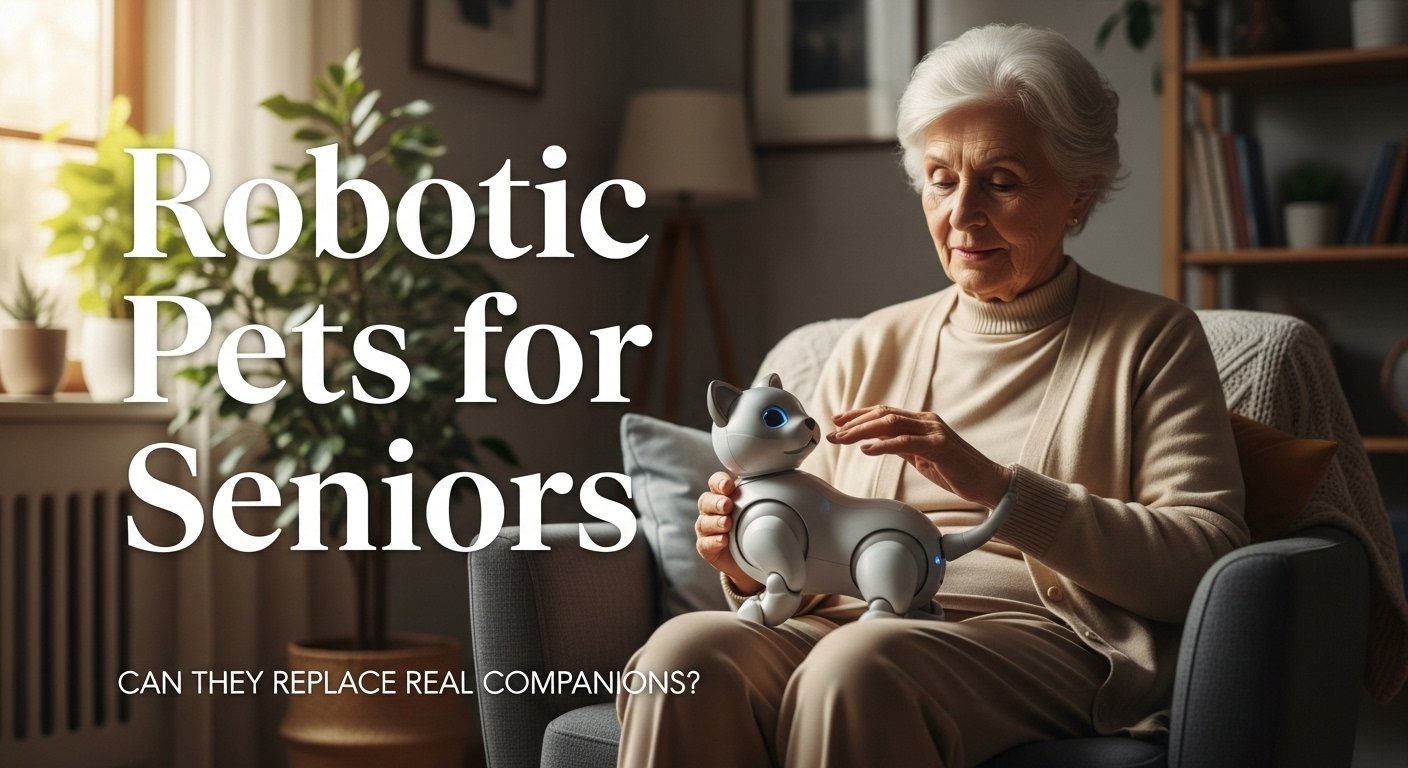
Robotic Pets: Can They Replace Real Companions for Seniors?
For centuries, pets have been cherished as loyal companions bringing joy, comfort, and unconditional love. But for many seniors, owning a real pet isn’t always possible due to mobility challenges, housing restrictions, or medical conditions.
Enter robotic pets lifelike cats and dogs designed to mimic real animals. From purring robotic cats to barking pups that respond to touch, these high-tech companions are finding a place in senior care.
But the big question is: can robotic pets truly replace real animal companionship? Let’s explore.
What Are Robotic Pets?
Robotic pets are interactive devices designed to look, move, and sometimes sound like real animals. Unlike stuffed toys, they feature sensors, motors, and AI features that allow them to:
- Purr, bark, or wag tails
- Respond to touch or sound
- Move their heads, paws, or tails realistically
- Provide comfort without the demands of real pet care
Popular examples include:
- Joy for All Companion Pets (by Ageless Innovation)
- Tombot Robotic Dog
- Sony Aibo
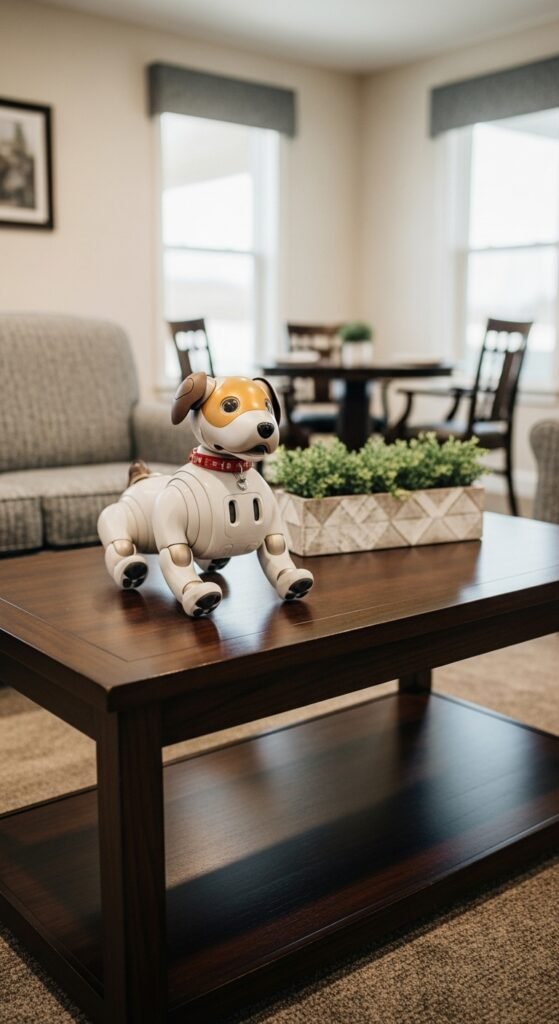
Why Seniors Are Turning to Robotic Pets
Benefits of Robotic Pets
- Companionship Without Responsibility
- No feeding, walking, or litter boxes required.
- Perfect for seniors with mobility challenges.
- Emotional Comfort
- Studies show robotic pets reduce loneliness and depression in older adults.
- Provide a sense of purpose and routine.
- Safe in Care Facilities
- Many assisted living homes don’t allow live pets.
- Robotic pets fill that emotional gap.
- Therapeutic Use
- Can calm anxiety and provide comfort to seniors with dementia or Alzheimer’s.
- Low Maintenance
- No vet bills, grooming, or worry about allergies.
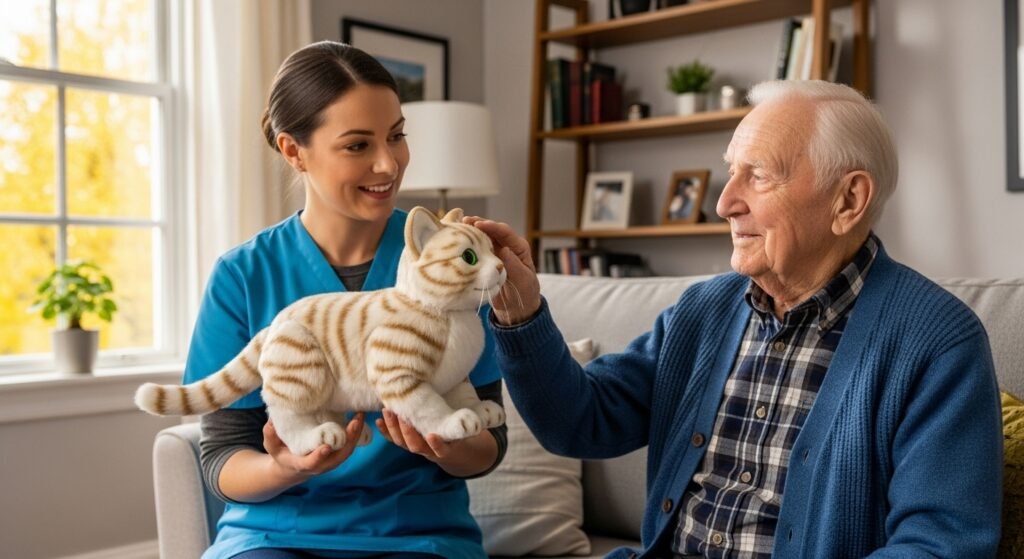
Real Pets vs. Robotic Pets
While robotic pets have many benefits, they can’t fully replace real animals. Let’s compare:
Feature | Real Pets 🐶🐱 | Robotic Pets 🤖 |
Emotional Bond | Deep, two-way bond | One-sided comfort |
Care Needs | Feeding, walking, vet visits | None |
Allergies | Possible triggers | Allergy-free |
Cost | Food, vet, supplies | One-time purchase |
Consistency | Unpredictable behavior | Predictable, safe |
Therapeutic Use | Proven health benefits | Promising, but limited |
For many seniors, robotic pets complement real ones but don’t fully replace them.
What Seniors Say: Real Stories
- Alice, 82 (Florida): “I can’t keep up with a real cat anymore, but my robotic kitty purrs when I pet her. She makes me feel less lonely.”
- George, 76 (Ohio): “I miss walking my old dog, but my robotic pup still makes me smile. It’s not the same, but it helps.”
- Nursing Home in New York: Staff reported reduced anxiety and more smiles among residents using robotic pets during therapy sessions.
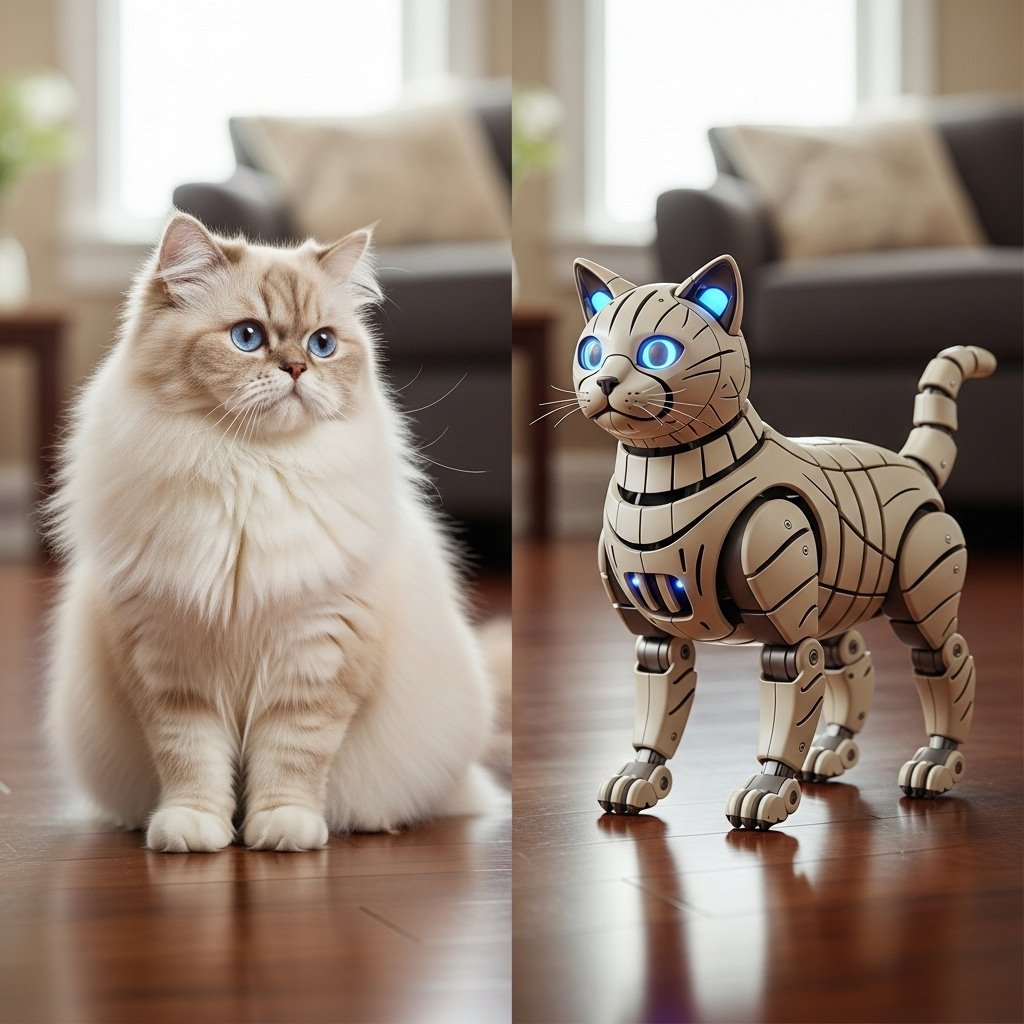
Limitations of Robotic Pets
While helpful, robotic pets have downsides:
- Lack of true emotional reciprocity → They don’t “love back” in the same way.
- Limited stimulation → Seniors who enjoyed walking dogs may miss the activity.
- Upfront cost → High-quality robotic pets range from $100–$2,900.
- Battery-powered → Requires charging or replacement parts.
They’re a wonderful tool, but not a substitute for real pet companionship in every case.
Who Benefits Most from Robotic Pets?
Robotic pets are especially beneficial for:
- Seniors in assisted living or nursing homes
- Those with allergies or mobility issues
- Seniors with dementia or Alzheimer’s
- Families who want to provide companionship without caregiving stress
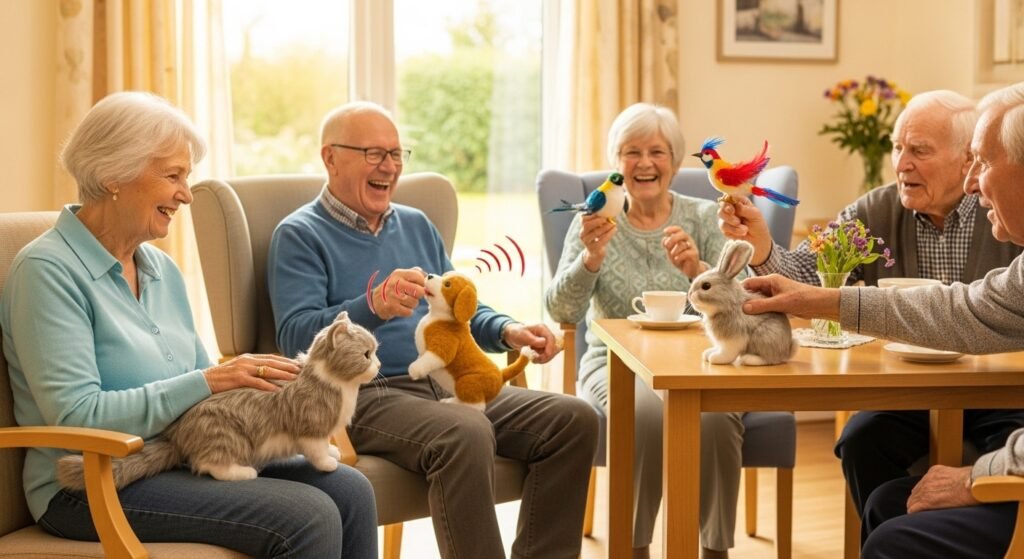
The Future of Robotic Companions
Technology is rapidly evolving. Future robotic pets may:
- Use AI to recognize voices and faces
- Respond with personalized interactions
- Connect to smart home systems for reminders and companionship
- Provide health monitoring features (e.g., detecting stress or heart rate)
- In time, robotic pets may bridge even more of the emotional gap.
Final Thoughts
Robotic pets aren’t meant to replace the love of real animals but they are powerful companions for seniors who can’t care for live pets.
They provide comfort, reduce loneliness, and bring joy to many older adults, especially in settings where real pets aren’t possible.
So, can they truly replace real pets? Not entirely. But they are a wonderful, heartwarming alternative that proves companionship doesn’t always have to come with fur and whiskers it can also come with a motor and a wagging robotic tail.



